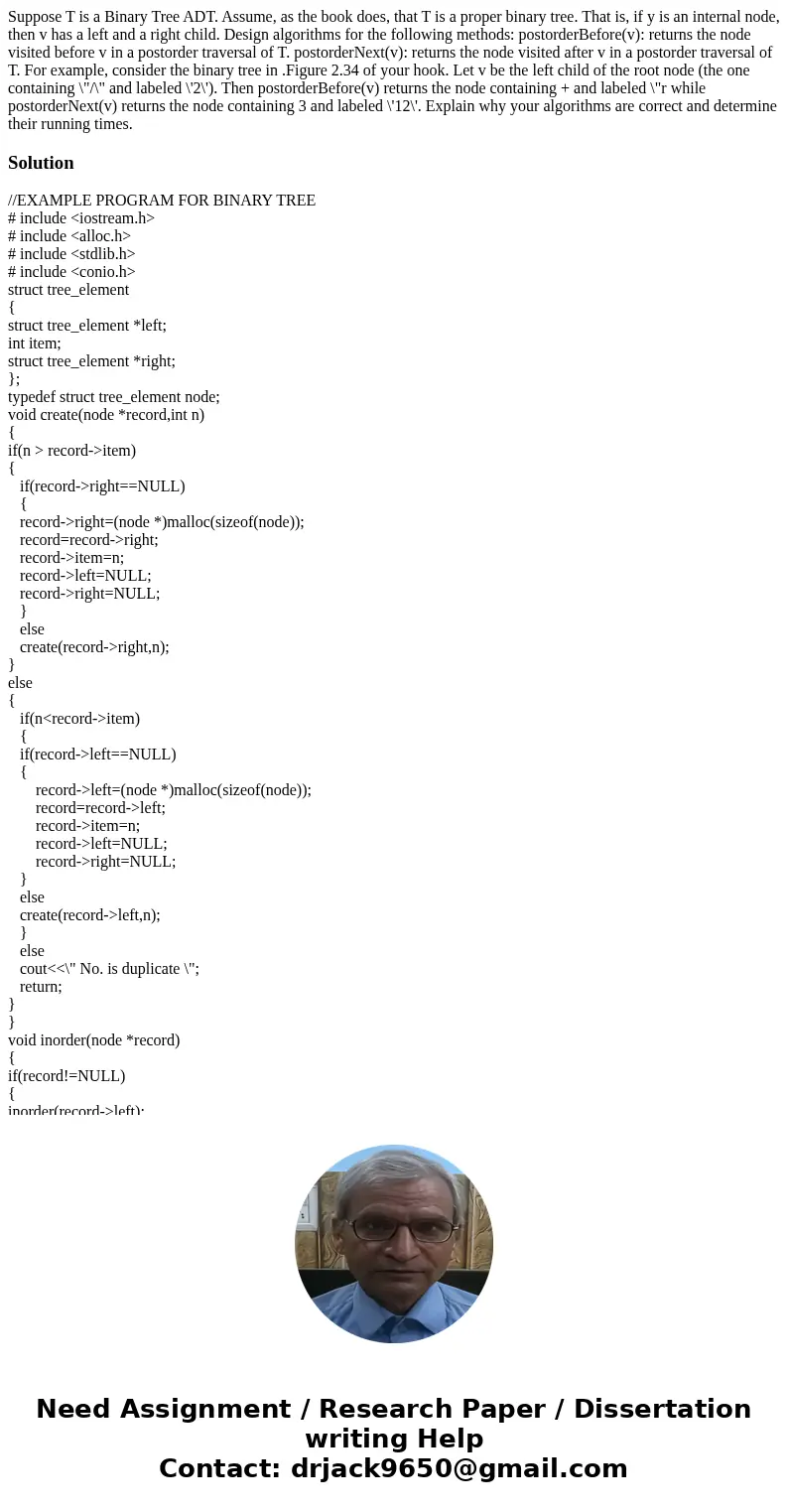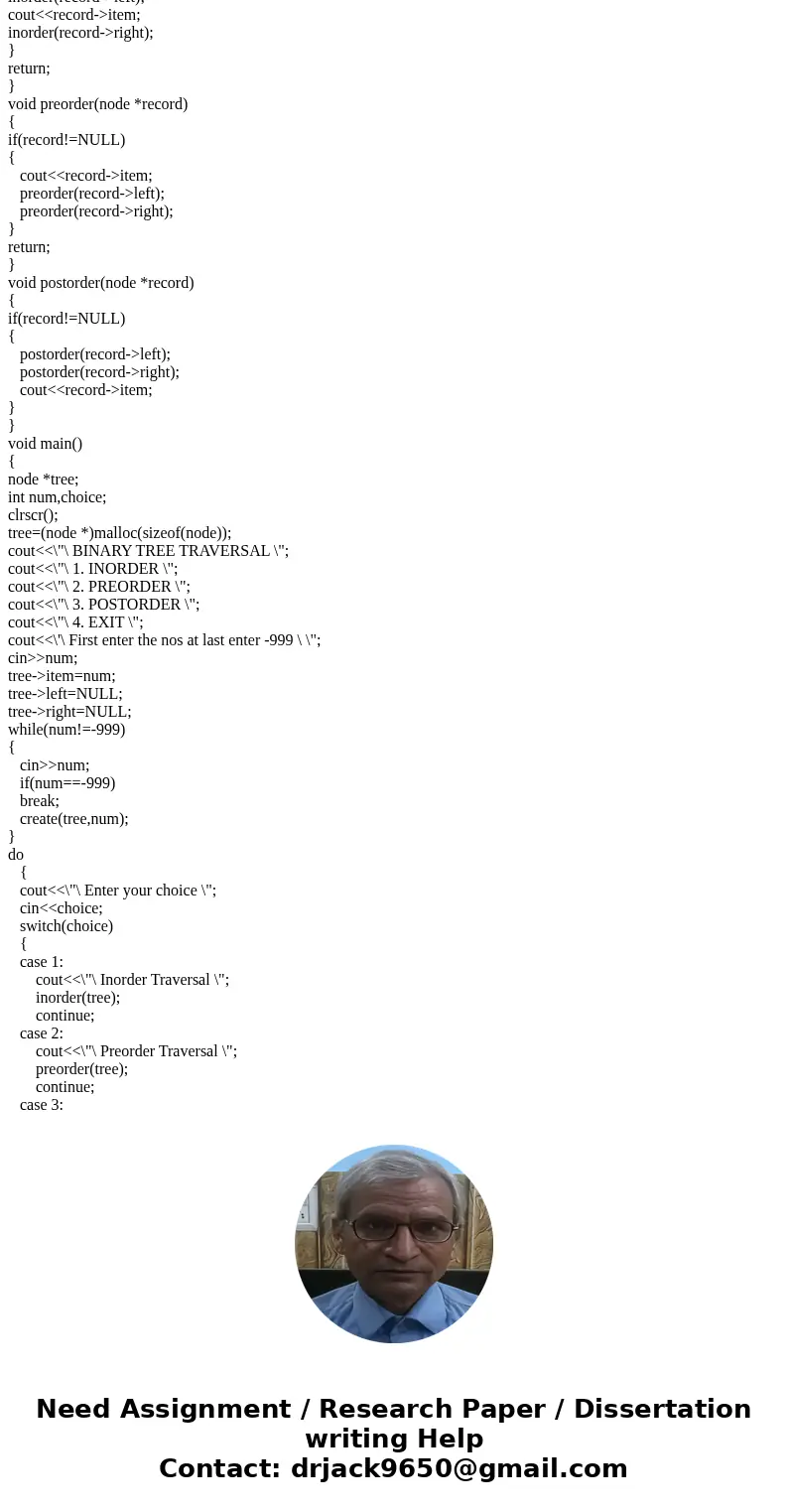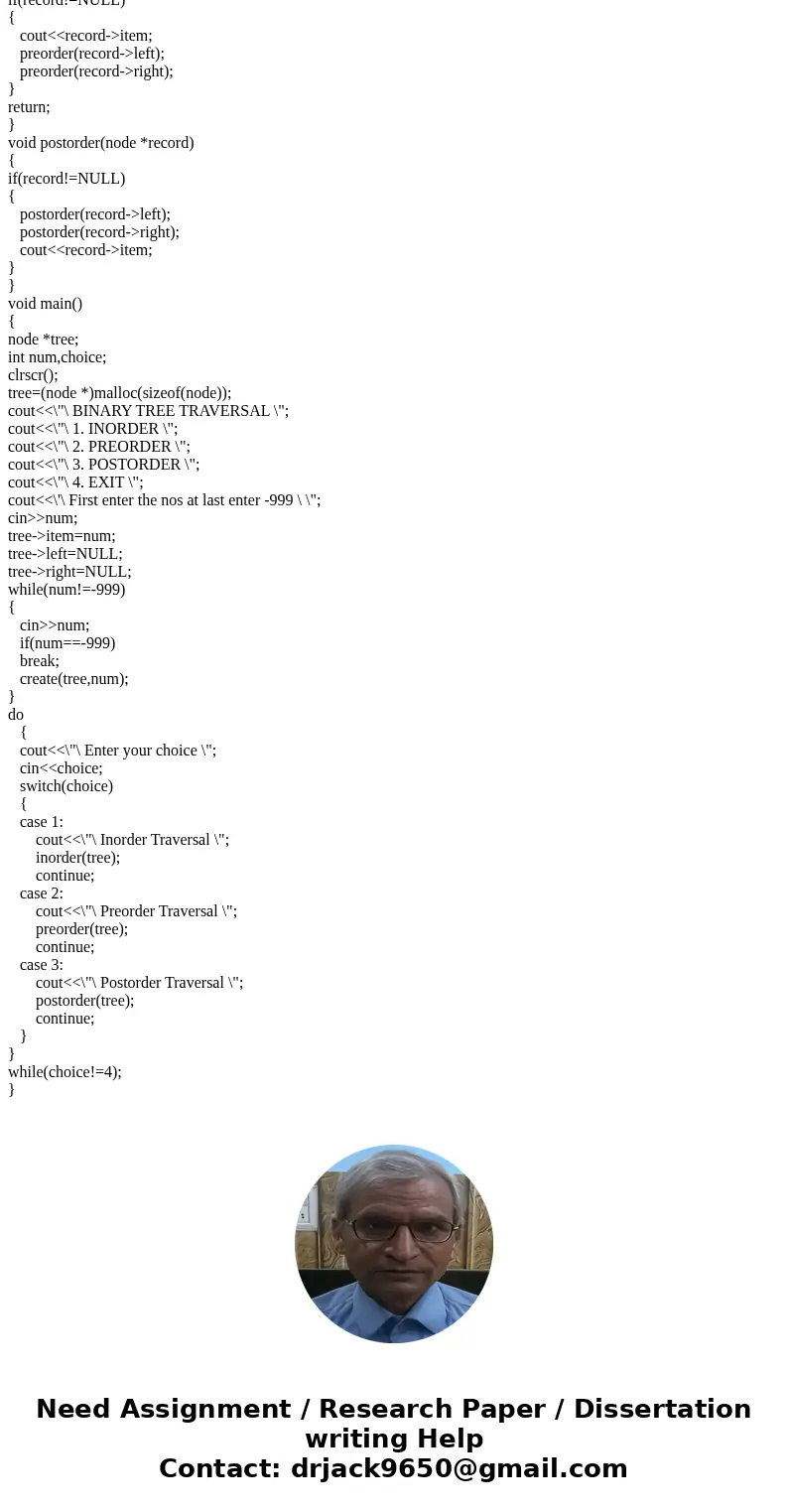Suppose T is a Binary Tree ADT Assume as the book does that
Solution
//EXAMPLE PROGRAM FOR BINARY TREE
# include <iostream.h>
# include <alloc.h>
# include <stdlib.h>
# include <conio.h>
struct tree_element
{
struct tree_element *left;
int item;
struct tree_element *right;
};
typedef struct tree_element node;
void create(node *record,int n)
{
if(n > record->item)
{
if(record->right==NULL)
{
record->right=(node *)malloc(sizeof(node));
record=record->right;
record->item=n;
record->left=NULL;
record->right=NULL;
}
else
create(record->right,n);
}
else
{
if(n<record->item)
{
if(record->left==NULL)
{
record->left=(node *)malloc(sizeof(node));
record=record->left;
record->item=n;
record->left=NULL;
record->right=NULL;
}
else
create(record->left,n);
}
else
cout<<\" No. is duplicate \";
return;
}
}
void inorder(node *record)
{
if(record!=NULL)
{
inorder(record->left);
cout<<record->item;
inorder(record->right);
}
return;
}
void preorder(node *record)
{
if(record!=NULL)
{
cout<<record->item;
preorder(record->left);
preorder(record->right);
}
return;
}
void postorder(node *record)
{
if(record!=NULL)
{
postorder(record->left);
postorder(record->right);
cout<<record->item;
}
}
void main()
{
node *tree;
int num,choice;
clrscr();
tree=(node *)malloc(sizeof(node));
cout<<\"\ BINARY TREE TRAVERSAL \";
cout<<\"\ 1. INORDER \";
cout<<\"\ 2. PREORDER \";
cout<<\"\ 3. POSTORDER \";
cout<<\"\ 4. EXIT \";
cout<<\'\ First enter the nos at last enter -999 \ \";
cin>>num;
tree->item=num;
tree->left=NULL;
tree->right=NULL;
while(num!=-999)
{
cin>>num;
if(num==-999)
break;
create(tree,num);
}
do
{
cout<<\"\ Enter your choice \";
cin<<choice;
switch(choice)
{
case 1:
cout<<\"\ Inorder Traversal \";
inorder(tree);
continue;
case 2:
cout<<\"\ Preorder Traversal \";
preorder(tree);
continue;
case 3:
cout<<\"\ Postorder Traversal \";
postorder(tree);
continue;
}
}
while(choice!=4);
}



 Homework Sourse
Homework Sourse